by Monte Davis
What’s a blind spot? Physically, it might be an area obscured behind a clump of trees in an otherwise open landscape. Or a gap between the views in the side and rear-view mirrors. Lines of sight cut short, or nonexistent.
Metaphorically, it gains new connotation: a blind spot is something you don’t perceive or understand — and you are unaware of not perceiving or grasping it (while presumably the one who points that out does so.) So: no there there.
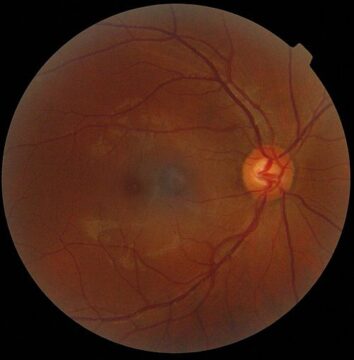 Anatomically, it’s the optic disc – the spot on each retina where neurons with news from all the light-sensitive rods and cones of the retina converge into the optic nerves. The optic disc itself, first described in 1666, has no sensors. So perceptually, your blind spots are two portions of the visual field that are inaccessible to vision. Even if you learned about them long ago, try this this simple, clever demo. (The link is a PDF file, and works poorly on a smartphone screen: view it on a desktop or laptop screen, or print it out.)
Anatomically, it’s the optic disc – the spot on each retina where neurons with news from all the light-sensitive rods and cones of the retina converge into the optic nerves. The optic disc itself, first described in 1666, has no sensors. So perceptually, your blind spots are two portions of the visual field that are inaccessible to vision. Even if you learned about them long ago, try this this simple, clever demo. (The link is a PDF file, and works poorly on a smartphone screen: view it on a desktop or laptop screen, or print it out.)
Are the blind spots big? SWAG it: your field of vision is roughly 210 degrees left to right, 150 degrees top to bottom. The blind spots are ovals 7-8 degrees wide and 5-6 degrees high, making their area less than one percent of the field’s total area. On the other hand, the full moon is just one-half degree across. So those two no-go zones, the blind spots you’re unaware of very nearly all your life, are each about a hundred times the area of the full moon. Are the blind spots small?

As a magazine science writer in 1978, I had an inch-deep acquaintance with neuroscience when I attended a talk by David Marr at MIT. At 32, Marr had been a rising star since his Cambridge doctoral thesis, A General Theory for Cerebral Cortex. (Yes, it was just as ambitious as that sounds.) Trained in mathematics as well as neurophysiology, Marr developed a schema for questions to be answered at different levels in any theory of an information-processing task. At MIT he concentrated on vision, and his talk was electric with ideas.
In an interview afterward, I asked Marr what he’d like to know about our non-perception of the blind spots. He replied that he hadn’t given it much thought, but the answer would probably involve interpolation from the surroundings of the spots, and integration over time as our gaze moves. Then he brightened:
“But that would be relatively simple sleight of hand. The real trick is keeping you unaware of just how narrow your macular and foveal vison is, and how sketchy all the rest is. I’d love to understand that!” Read more »


 Sughra Raza. Rorschach Landscape, Guilin, China, January 2020.
Sughra Raza. Rorschach Landscape, Guilin, China, January 2020.

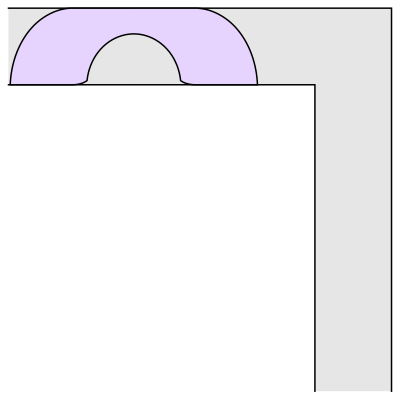
 Of course there was no guarantee that Gerver’s couch was the biggest possible. Dr. Gerver’s approach made no promises that it gave the best possible, after all. A little more convincing is the fact that in 30 years we haven’t been able to do any better. But mathematics is a game of centuries and millennia — a few decades is small potatoes. In 2018, Yoav Kallus and Dan Romik proved that the couch could be no larger than 2.37 square meters. But the gap in size between Gerver’s couch and the Kallus-Romik upper bound is an order of magnitude larger than that between the couches of Gerver and Hammersley.
Of course there was no guarantee that Gerver’s couch was the biggest possible. Dr. Gerver’s approach made no promises that it gave the best possible, after all. A little more convincing is the fact that in 30 years we haven’t been able to do any better. But mathematics is a game of centuries and millennia — a few decades is small potatoes. In 2018, Yoav Kallus and Dan Romik proved that the couch could be no larger than 2.37 square meters. But the gap in size between Gerver’s couch and the Kallus-Romik upper bound is an order of magnitude larger than that between the couches of Gerver and Hammersley.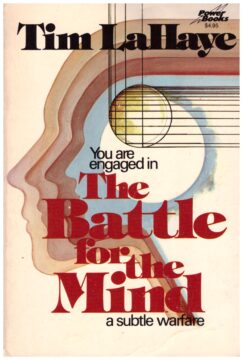
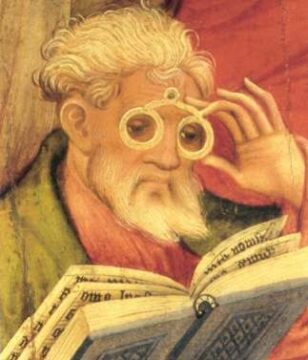
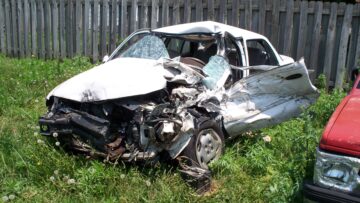


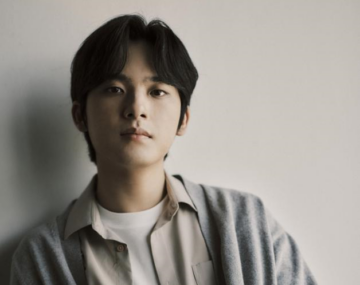 Someone else who understands the power of a single note is pianist Yunchan Lim, winner of the 2022 Van Cliburn competition at age 18, who electrified the classical music community with his performances of Rachmaninoff’s Concerto No. 3 and Liszt’s Transcendental Études and has since sold out concerts around the world. His reputation for virtuoso barrages of perfect notes at dizzying speeds belies a deep engagement in the sound he can extract from the piano with a single note—a process he demonstrated in
Someone else who understands the power of a single note is pianist Yunchan Lim, winner of the 2022 Van Cliburn competition at age 18, who electrified the classical music community with his performances of Rachmaninoff’s Concerto No. 3 and Liszt’s Transcendental Études and has since sold out concerts around the world. His reputation for virtuoso barrages of perfect notes at dizzying speeds belies a deep engagement in the sound he can extract from the piano with a single note—a process he demonstrated in 
 Sughra Raza. Cambridge In The Charles, December, 2024.
Sughra Raza. Cambridge In The Charles, December, 2024. I will be in Strasbourg, France during Christmas this year, spending time with my 96 year old father who talks about his mother, my mother, and his cousins, all gone now, but seemingly alive to him.
I will be in Strasbourg, France during Christmas this year, spending time with my 96 year old father who talks about his mother, my mother, and his cousins, all gone now, but seemingly alive to him.
